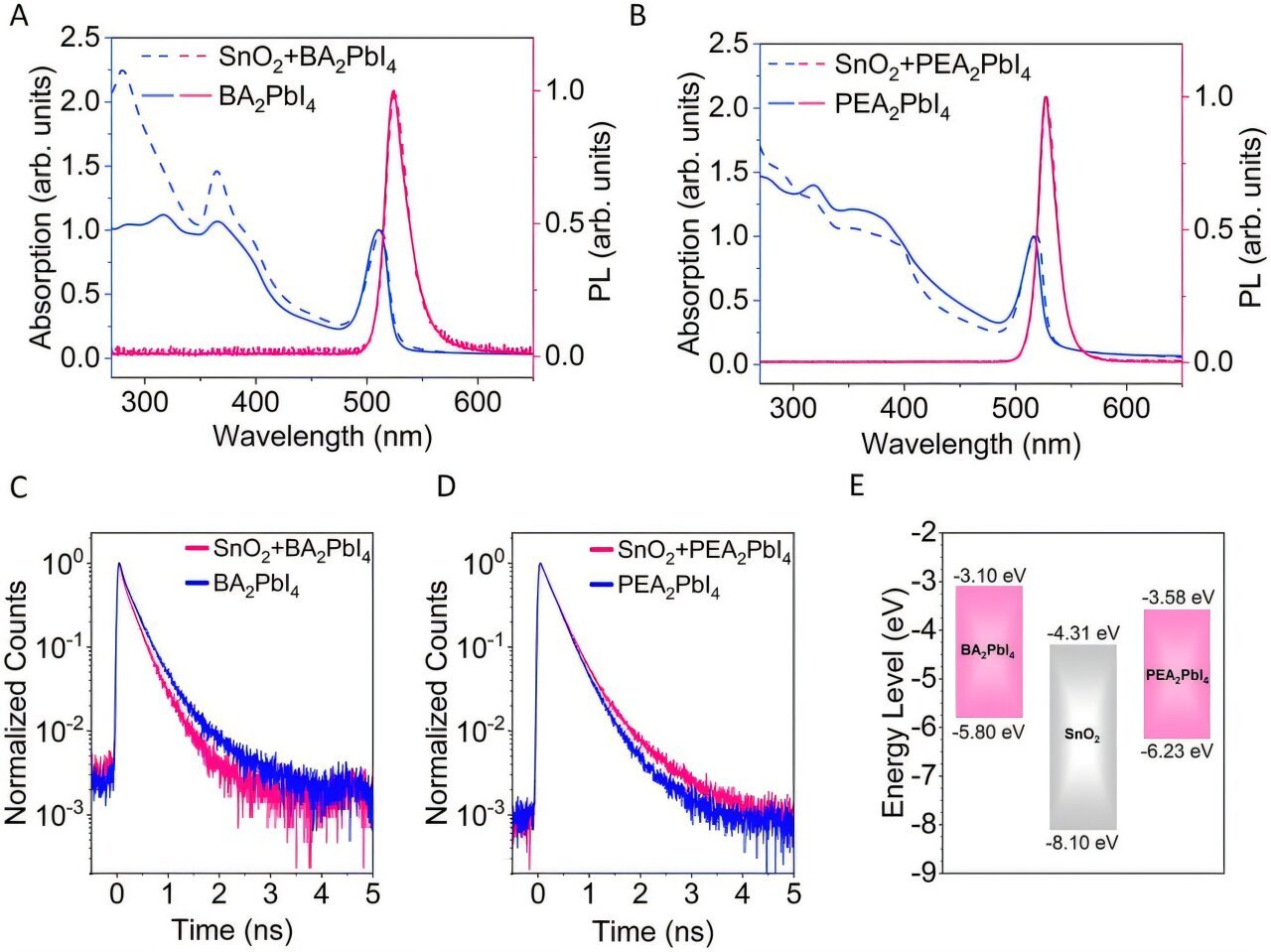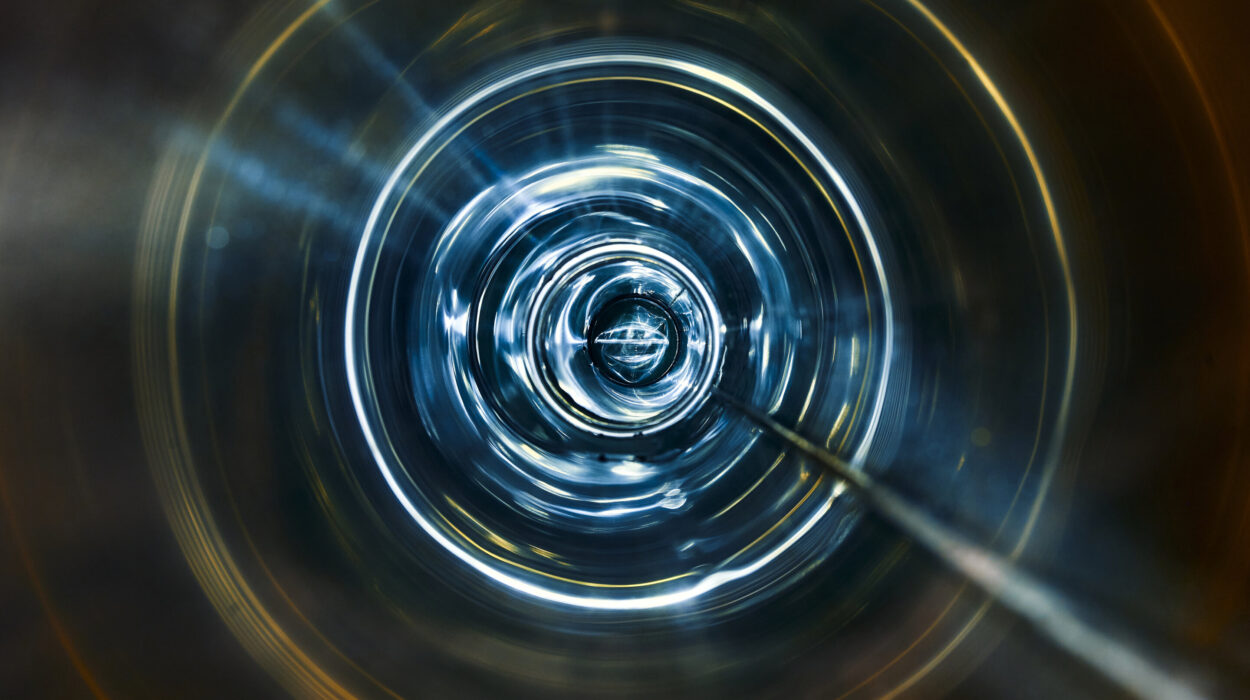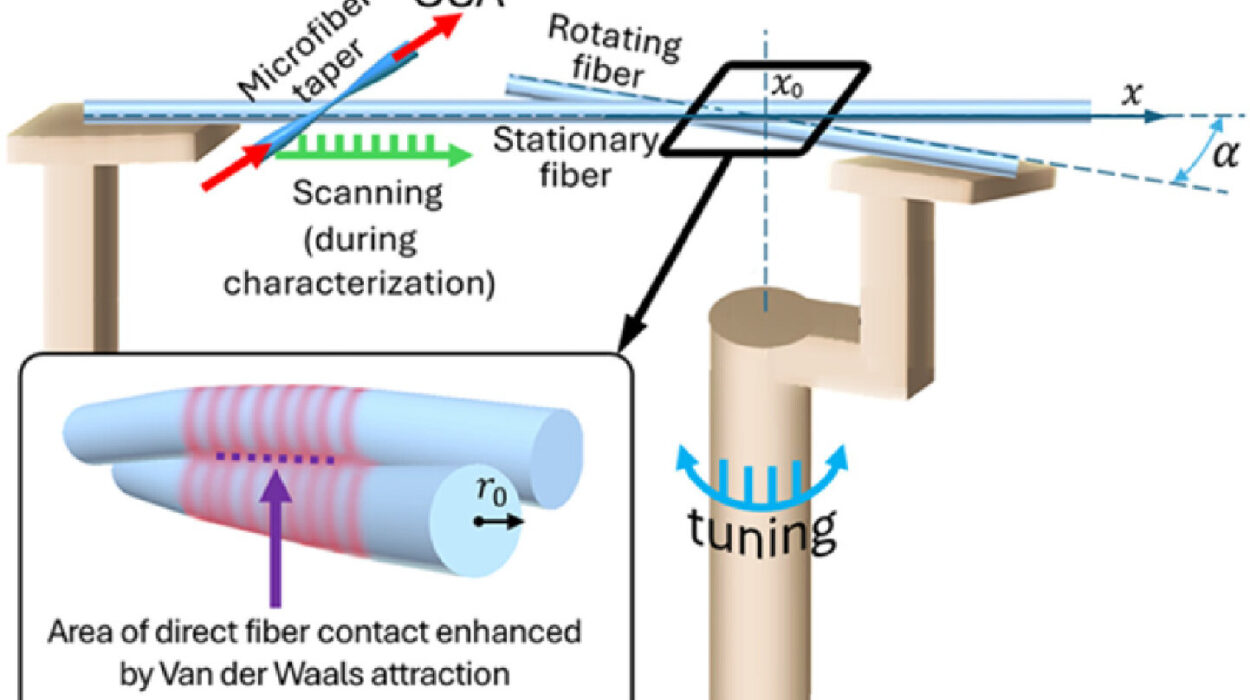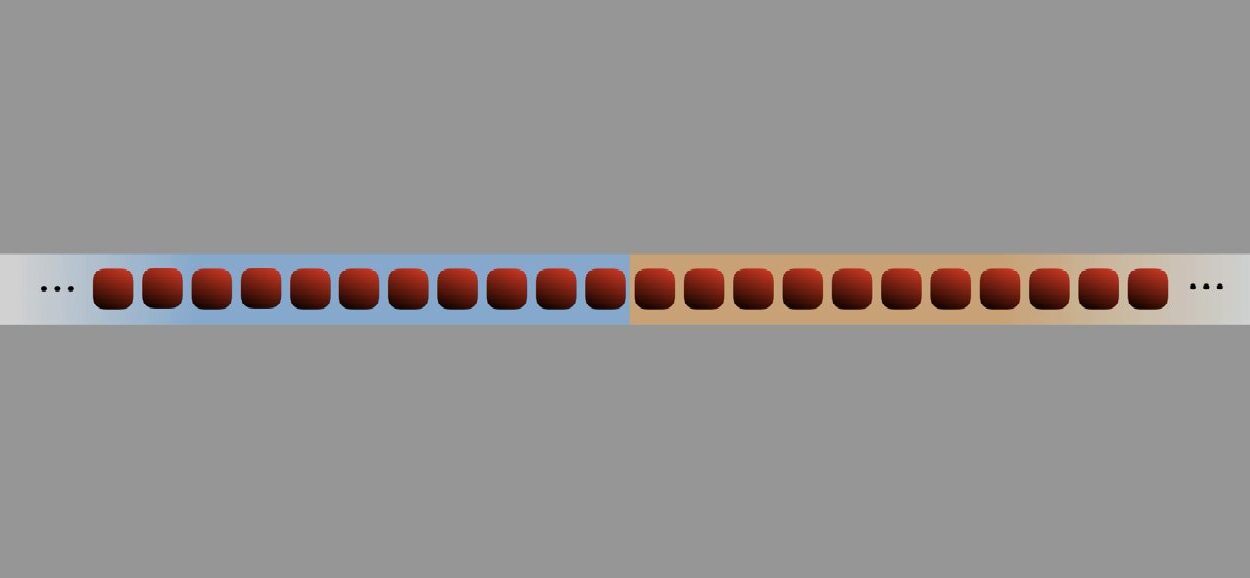Scientists at the University of Missouri (Mizzou) are unlocking the powerful potential of halide perovskites—a cutting-edge material that holds the promise of revolutionizing energy-efficient optoelectronics. Researchers Suchi Guha and Gavin King, physics professors in Mizzou’s College of Arts and Science, have teamed up to study the material at the nanoscale, where they can fully exploit its unique properties. These properties could contribute to a new wave of technological advancements, from making solar panels more efficient and affordable, to improving the longevity and energy usage of LED lights.
What are Halide Perovskites?
Halide perovskites are materials with a unique crystal structure that gives them remarkable efficiency in converting sunlight into energy. This efficiency, combined with their relatively low cost of production, has made halide perovskites an exciting candidate for a variety of optoelectronic applications. Optoelectronics is a branch of technology that deals with the interaction of light and electronic devices—applications that range from solar cells to light-emitting diodes (LEDs) and laser systems.
The structure of halide perovskites is critical to their performance. The material consists of ultra-thin crystalline layers that, on a microscopic level, allow electrons and light to interact in ways that amplify their ability to convert light to energy. As a result, halide perovskites have proven to be not only more effective than traditional materials in energy conversion but also more efficient at turning light into electrical power, especially at a much lower cost. For example, in solar cells, these materials can potentially harness more energy from sunlight compared to conventional materials like silicon.
Nanoscale Exploration and Chemical Vapor Deposition
Guha and her team at Mizzou have been instrumental in exploring the nanoscale properties of halide perovskites—properties that only emerge at the microscopic level, invisible to the naked eye. By focusing on these ultra-small scales, the researchers have deepened their understanding of the material’s fundamental optical characteristics. Guha, a solid-state physics expert, believes these insights can lead to huge advancements in making solar energy and other optoelectronic technologies more effective.
The team used an advanced technique called chemical vapor deposition (CVD) to synthesize these materials. This method, pioneered by Randy Burns, a former graduate student of Guha, was honed through collaboration with Chris Arendse at the University of the Western Cape in South Africa. CVD involves depositing chemical vapors onto a surface to create thin films. This highly controlled process allows the precise layering of the material’s components, leading to the formation of high-quality halide perovskite films suitable for mass production, especially of solar cells. With this scalable technique, the production of halide perovskite-based solar panels could become a game-changer in renewable energy technology.
Guha’s team uses ultrafast laser spectroscopy to explore how halide perovskites interact with light. By studying the material at incredibly short timescales, the researchers can pinpoint the behavior of electrons and excitons (bound states of an electron and a hole) as they move through the material—key interactions that directly influence the material’s performance. These studies help optimize the perovskites for specific electronic and optical applications, ensuring they function most effectively in solar cells and LEDs.
Ice Lithography: Sculpting Nanoscale Properties
While Guha’s focus has been on understanding the fundamental properties of halide perovskites, Gavin King, an expert in biological physics who works primarily with organic materials, is taking a different approach to fine-tune their capabilities. King’s work complements Guha’s by helping to create intricate nanoscale patterns that modify the optical and electronic properties of the perovskite material for specialized functions.
King employs a technique known as ice lithography. This process requires cooling the perovskite material to cryogenic temperatures (below -150°C, or -238°F). At these super-low temperatures, ice lithography uses an electron beam to “etch” specific patterns into the material, creating nanoscale designs that grant the material unique functionalities, such as the ability to more effectively absorb or emit light. King likens the process to using a “nanometer-scale chisel” to carve out microscopic structures within the material.
In simple terms, ice lithography allows King’s team to precisely engineer the nanoscale structure of perovskite films, which enhances their efficiency for use in various optoelectronic devices. These carefully engineered patterns help to ensure that devices such as LEDs and solar cells operate with higher efficiency, longer lifespans, and lower energy consumption, thus making them more suitable for both commercial and residential use.
Collaboration: The Key to Progress
Although Guha and King come from different fields within physics—Guha from solid-state physics and King from biological physics—their collaboration has proven immensely fruitful. As Guha points out, working alongside other experts from complementary disciplines allows for cross-pollination of ideas that would not have been possible if they were working independently. Combining their areas of expertise has opened new avenues for research and led to insights that were initially unimagined. This fusion of skills in biophysics and solid-state physics has allowed the two teams to work together seamlessly and expand the possibilities for halide perovskites in ways they hadn’t originally anticipated.
In many ways, their partnership is a microcosm of the broader trend in modern scientific research, where interdisciplinary collaborations have become essential to solving complex problems. Guha says, “When you collaborate, you get the full picture, and the chance to learn new things. For instance, Gavin’s expertise in biological materials is expanding the applications of our perovskite research, which has led to new opportunities we hadn’t originally thought about.”
King echoes this sentiment, emphasizing the importance of diverse perspectives in tackling large-scale scientific challenges. “If we were all trained the same way, we’d all think the same, and that wouldn’t allow us to accomplish as much as we can here together. We have people from different backgrounds, which brings a unique approach to every problem.”
Their successful partnership is one of many within Mizzou’s broader commitment to cutting-edge energy research, which is being fueled by the newly established Center for Energy Innovation. This center aims to drive innovations in sustainable energy systems, energy-efficient materials, and technologies that can help address the global energy crisis.
Impact on the Future of Energy Efficiency
The University of Missouri’s work with halide perovskites has significant implications for a future powered by renewable energy. Halide perovskites could, in time, lead to vastly cheaper solar panels and more efficient optoelectronic devices like LEDs. The scalable production of these materials, combined with their unique ability to absorb sunlight and convert it to electricity, makes them an important part of the global move toward cleaner, more sustainable energy solutions.
Perhaps most notably, halide perovskites could drastically cut down on the cost of producing solar panels, helping make solar power more accessible to the mass market, particularly in areas where traditional silicon-based solar panels are too expensive to deploy. For example, in remote regions of the world that lack access to stable grids, affordable, efficient solar energy could become a viable power source for homes and businesses alike.
Meanwhile, the innovations in lighting technology made possible by perovskites could help bring about more efficient lighting options for homes, businesses, and cities. LEDs made from halide perovskites could be brighter, more durable, and far more energy-efficient than traditional lights, all while significantly reducing the need for frequent replacements. The more efficient these systems are, the more they can help decrease the energy footprint and provide cost savings over time.
Conclusion
Guha and King’s groundbreaking research into halide perovskites promises to drive significant advancements in energy technology in the coming years. As the world pushes toward more sustainable and efficient energy solutions, their work represents a beacon of innovation. With continued research and collaboration, the insights gained from studying halide perovskites could fuel a new era in renewable energy technology, lighting the way for a future where our energy needs are met more affordably, efficiently, and sustainably.
Their efforts stand as a prime example of how scientific collaboration—across disciplines, institutions, and borders—can accelerate breakthroughs that drive societal and environmental progress. This shared vision of the future will not only transform how we generate and consume energy but could also ultimately help to secure a more sustainable and prosperous world for future generations.
The team’s latest findings have been published in prestigious scientific journals such as Journal of Materials Chemistry C and Small, contributing further to the growing body of research that positions halide perovskites as one of the most promising materials of the 21st century.
References: Dallar Babaian et al, Carrier relaxation and exciton dynamics in chemical-vapor-deposited two-dimensional hybrid halide perovskites, Journal of Materials Chemistry C (2024). DOI: 10.1039/D4TC03014A
Randy Burns et al, Stabilizing Metal Halide Perovskite Films via Chemical Vapor Deposition and Cryogenic Electron Beam Patterning, Small (2024). DOI: 10.1002/smll.202406815






